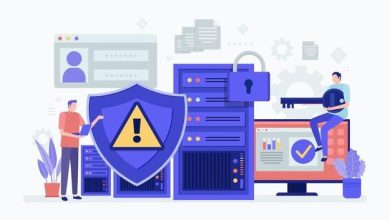Check Point’s 2025 Cloud Security Report Finds Dangerous Blind Spots Costing Enterprises Time, Trust
Report fFnds 65% of Organisations Suffered a Cloud-Security Incident in the Past Year but Only 6% Remediated It Within an Hour

Check Point® Software Technologies Ltd., a pioneer and global leader of cybersecurity solutions, has released its 2025 Cloud Security Report. Based on a global survey of more than 900 CISOs and IT leaders, the report reveals systemic weaknesses, including alert fatigue, fragmented toolsets, and a widespread inability for organisations to detect lateral movement or defend against AI-driven attacks leaving enterprises dangerously exposed. The findings also include actionable strategies for closing the gap between cloud innovation and cyber resilience.
As hybrid, multi-cloud, and edge architectures expand, many organisations are relying on outdated security models that cannot keep up. According to the 2025 Cloud Security Report, 65% of organisations experienced a cloud-related security incident in the past year—up from 61% the previous year. Alarmingly, only 9% detected the incident within the first hour, and a mere 6% managed to remediate it within that time frame, allowing intruders to remain undetected across cloud environments.
“Security teams are chasing an ever-moving target,” said Paul Barbosa, VP of Cloud Security at Check Point Software Technologies. “As cloud environments grow more complex and AI-driven threats evolve, organisations can’t afford to be stuck with fragmented tools and legacy approaches. It’s time to shift toward unified, intelligent, and automated defences designed for the realities of today’s decentralised world.”
What the 2025 Cloud Security Report Found Out
Key findings from the 2025 Cloud Security Report include:
- Cloud Adoption Outpaces Security Readiness: 62% of organisations have adopted cloud edge technologies, 57% use hybrid cloud, and 51% operate in multi-cloud environments. Legacy, perimeter-based defences cannot keep up with these distributed infrastructures
- Detection and Remediation Are Too Slow: Only 9% of organisations detected an incident within the first hour. Meanwhile, 62% took more than 24 hours to remediate breaches, giving attackers ample time to escalate access
- Tool Sprawl is Fuelling Alert Fatigue: A significant 71% of respondents rely on over 10 different cloud security tools, while 16% utilise more than 50. More than half of them face nearly 500 alerts daily hindering response times and overwhelming analysts
- Application Security Lags Behind: 61% still rely on outdated, signature-based Web Application Firewalls (WAFs), which are increasingly ineffective against sophisticated, AI-enhanced threats
- AI is a Priority—but Defenders Are Not Ready: While 68% list AI as a top priority for cyber defence, only 25% feel prepared to counter AI-driven attacks, highlighting a critical capability gap.
- Lateral Movement Remains a Blind Spot: Only 17% of organisations have full visibility into east-west cloud traffic. Once attackers breach the perimeter, they can move undetected within cloud environments
- Detection Often Comes from People, Not Tools: Only 35% of cloud incidents were detected via security monitoring platforms. The majority were identified through employees, audits, or external reports—revealing alarming gaps in real-time threat detection
- Internal Challenges Undermine Progress: 54% cite the pace of technological change as a major hurdle, while 49% face a shortage of skilled security professionals. Tool fragmentation and poor platform integration (40%) further slow response times and exacerbate blind spots
To close these gaps, Check Point recommends a shift toward decentralised, prevention-first cloud security strategies. The report advises organisations to consolidate their toolsets, adopt AI-powered threat detection, and deploy real-time telemetry to gain full visibility across edge, hybrid, and multi-cloud environments. By leveraging Check Point CloudGuard and the Check Point Infinity Platform, organisations can unify their cloud defences, automate incident response, and ensure consistent policy enforcement—regardless of platform or provider.
Deryck Mitchelson, Global CISO at Check Point Software Technologies provides guidance within the 2025 cloud security report and emphasises that, “cloud transformation is accelerating faster than our defences. With attackers moving in minutes and defenders responding in days, the gap between detection and remediation is becoming a danger zone. CISOs must consolidate fragmented tools into unified platforms, gain visibility into lateral movement, and prepare their teams and technologies to counter AI-driven threats, or risk ceding control of the cloud to increasingly sophisticated adversaries.”
To access the full 2025 Cloud Security Report and receive actionable CISO advice for safeguarding against the cloud-related issues discussed, please visit our website and read our blog.




